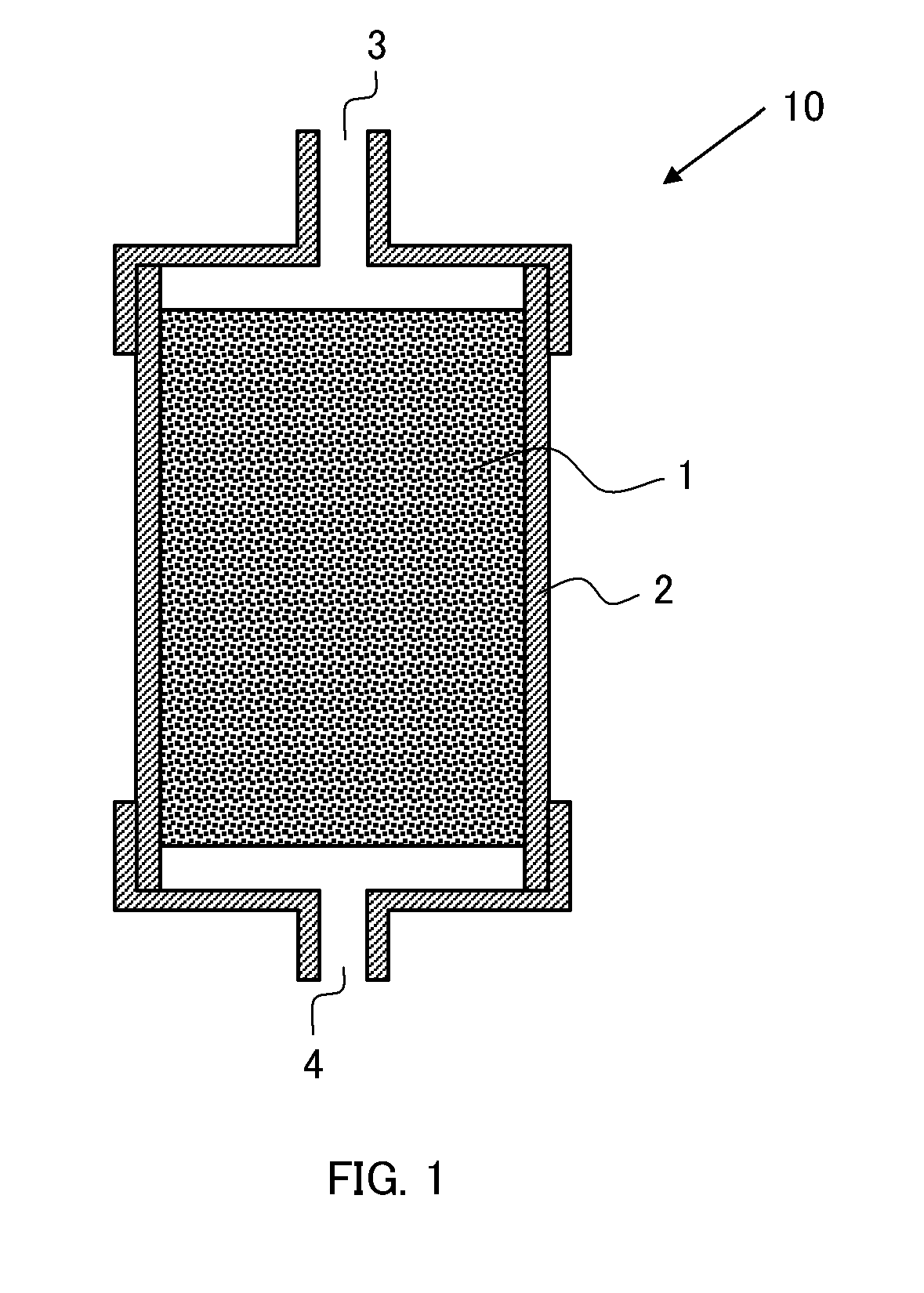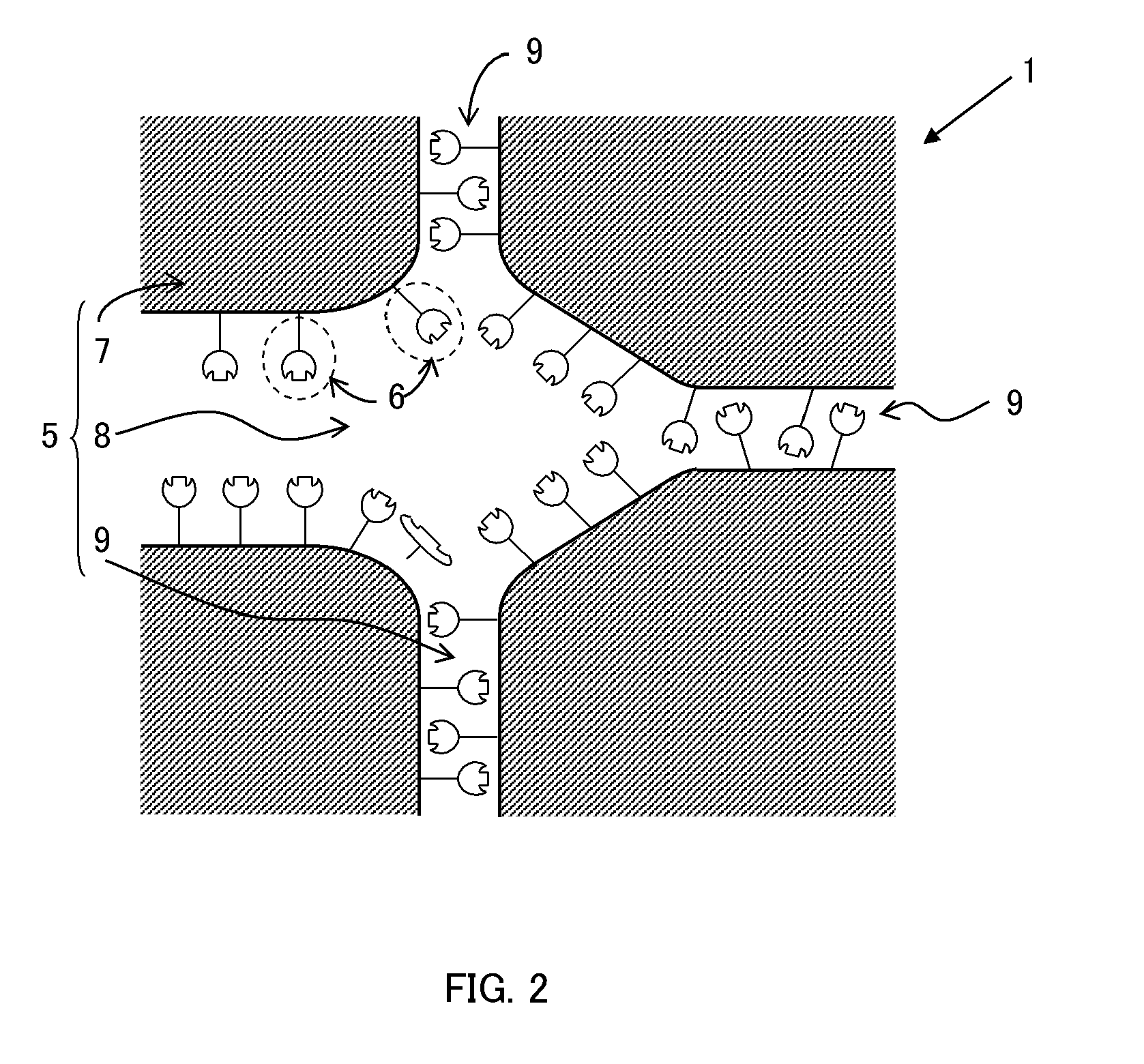Adsorption column for purifying body fluid
a technology for purifying body fluid and column, which is applied in the direction of moving filter element filter, filtration separation, separation process, etc., can solve the problems of increasing the risk of arteriosclerosis, increasing the risk of myocardial infarction and cerebral infarction, and reducing the effective area of micropores, so as to reduce the efficiency of body fluid purification, the effect of reducing the effective area of the micropor
- Summary
- Abstract
- Description
- Claims
- Application Information
AI Technical Summary
Benefits of technology
Problems solved by technology
Method used
Image
Examples
first embodiment
[0052]As shown in FIG. 1, an apparatus of the present invention 10 is constituted in such a way that a columnar adsorbent 1 is contained in a cylindrical container 2. Openings 3 and 4 are each formed in each of the end surfaces of the cylindrical container 2, and the opening 3 serves as an inlet for a body fluid to be treated (postulated to be the plasma in the present embodiment), while the other opening 4 serves as an outlet for a treated body fluid.
[0053]The adsorbent 1, which is a major component part of the apparatus of the present invention 10, is, as schematically shown in FIG. 2, provided by modifying the surface of an inorganic porous support 5, which is formed in a columnar shape, with a functional group 6 which specifically binds to a substance to be adsorbed and immobilizing the functional group 6 thereon. In the present embodiment, LDL in the blood is postulated to be the substance to be adsorbed, and as the functional group 6, dextran sulfate or a salt thereof, a polya...
second embodiment
[0078]A second embodiment of the apparatus of the present invention is described. As shown in FIG. 12, an apparatus of the present invention 20 of a second embodiment is constituted in such a way that a cylindrical adsorbent 11 is contained in a cylindrical container 12. Openings 13 and 14 are each formed in each of end surfaces of the cylindrical container 12, and the opening 13 serves as an inlet for a body fluid to be treated (postulated to be the blood in the present embodiment), while the other opening 14 serves as an outlet for a treated body fluid.
[0079]As shown in FIG. 12, a cylindrical outer lateral surface 11a of the adsorbents 11 is spaced from an inner wall surface of the cylindrical container 12, and therebetween a channel 15 is formed for a body fluid (postulated to be the plasma here) which has passed through the adsorbent 11. Also, a cylindrical inner space of the adsorbent 11 serves as a channel 16 for a body fluid (blood) which does not pass through the adsorbent 1...
PUM
| Property | Measurement | Unit |
|---|---|---|
| Length | aaaaa | aaaaa |
| Length | aaaaa | aaaaa |
| Diameter | aaaaa | aaaaa |
Abstract
Description
Claims
Application Information
 Login to View More
Login to View More - R&D
- Intellectual Property
- Life Sciences
- Materials
- Tech Scout
- Unparalleled Data Quality
- Higher Quality Content
- 60% Fewer Hallucinations
Browse by: Latest US Patents, China's latest patents, Technical Efficacy Thesaurus, Application Domain, Technology Topic, Popular Technical Reports.
© 2025 PatSnap. All rights reserved.Legal|Privacy policy|Modern Slavery Act Transparency Statement|Sitemap|About US| Contact US: help@patsnap.com



